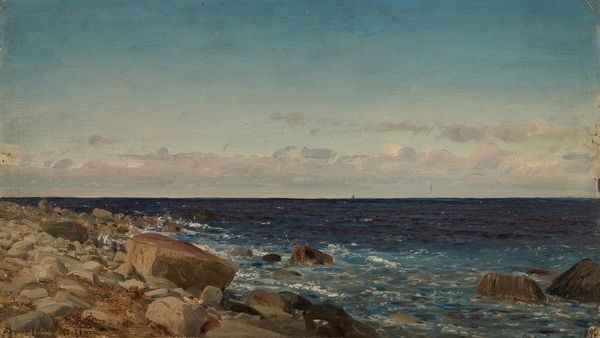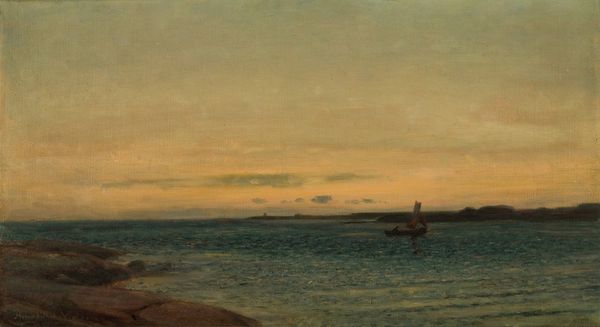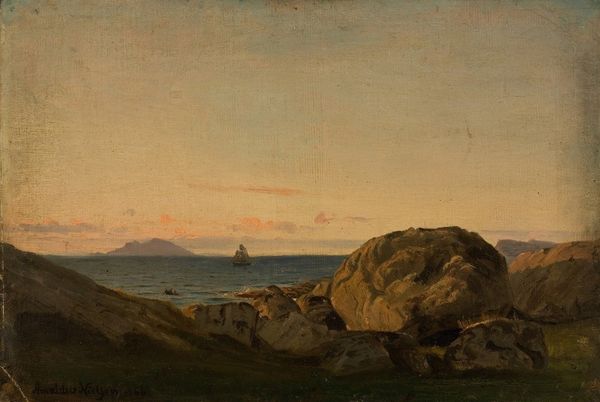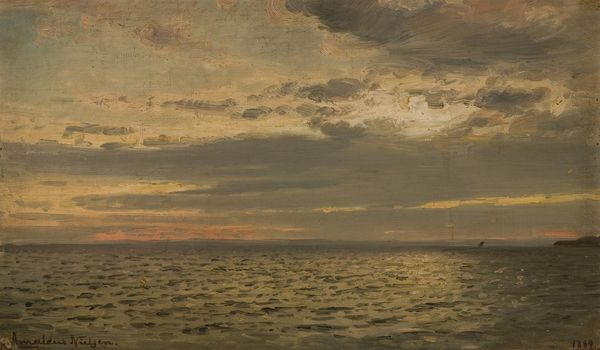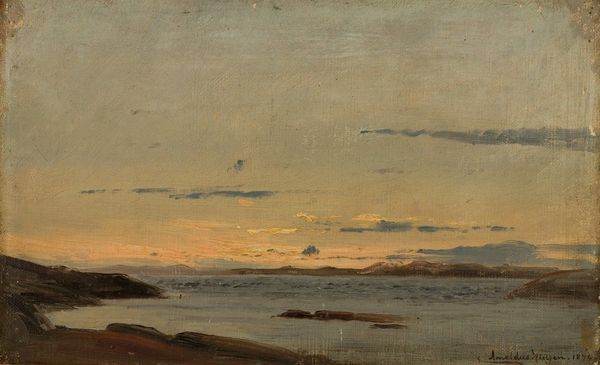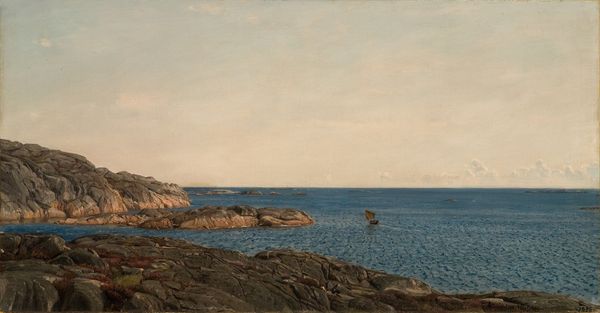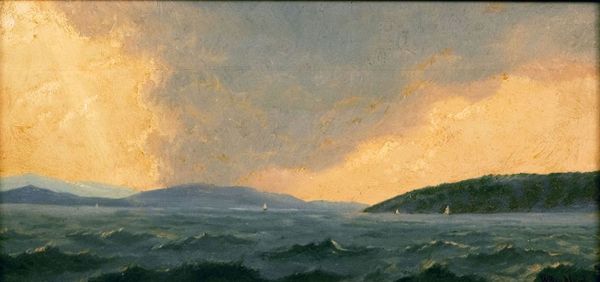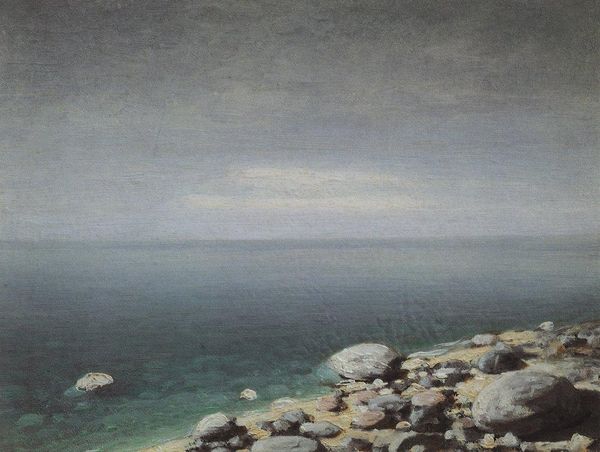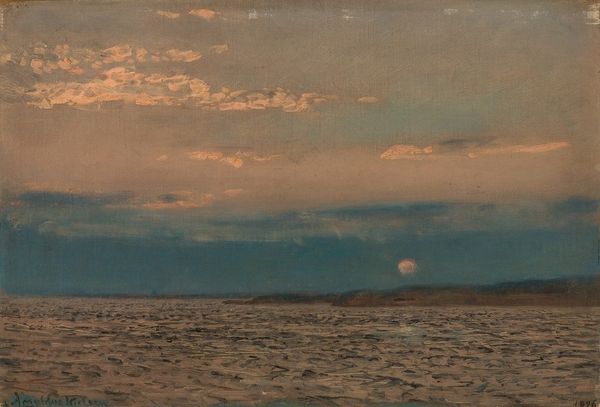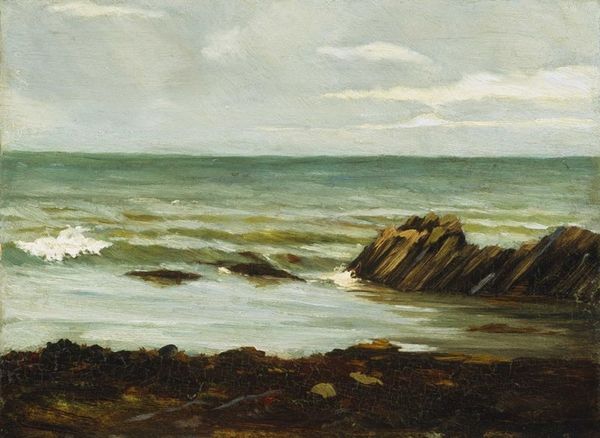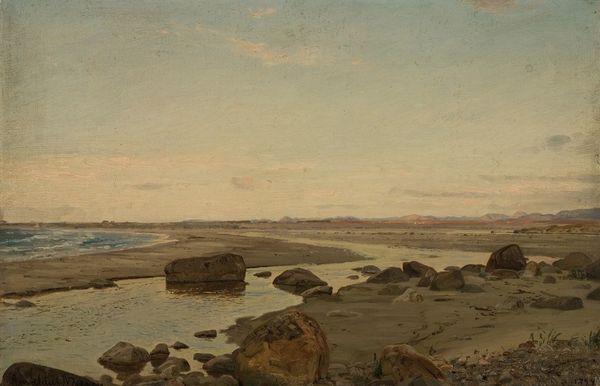
Copyright: Public domain
Curator: The colors wash over me; there's something profoundly wistful about this painting. Editor: You're responding to Ivan Aivazovsky’s "Farewell," completed in 1895 using oil paint. A gathering of figures stands silhouetted atop a rocky cliff, bidding adieu, presumably, to the distant ship just visible on the horizon. It speaks to themes of leaving, doesn’t it? But also longing. Curator: Absolutely. The romanticism is palpable, a sense of drama inherent in the cliffside perch and the endless, beckoning sea. Seascapes hold a particular weight for me, the vastness of water so often a stand-in for time, and in this instance, perhaps grief? Editor: Given the tumultuous political landscape of late 19th-century Russia, with increasing restrictions on freedoms and burgeoning revolutionary movements, one can't help but wonder if this "farewell" speaks to something beyond the personal. What did it mean to depart from one’s homeland? Was the emotional intensity, so characteristic of Aivazovsky, here charged with social anxiety? Curator: Interesting. The raised arm of one figure, is it a salute or a plea? To consider it not simply as a sentimental goodbye but also as a gesture of resistance, a yearning for liberty… the symbolism is far richer. Editor: And what about the water? The figures stand safely on high, yet the water churns, rendered in those trademark Aivazovsky strokes – dark and foreboding. Maybe they represent a departure point, an exodus for those who face an unknowable destiny once they embark upon such journey, never sure when they will find peace and return to their origins. Curator: The painting embodies something elemental – a tension between rootedness and restless wandering. The rock on which the figures stand symbolizes stability and resistance but maybe also isolation; beyond, the waters represent a call towards the unknown, one that at once repels and lures them into what may be their new identity. It could well serve as a complex metaphor for the choices and yearnings so relevant even in our present. Editor: It prompts such crucial questions about displacement, doesn't it? Even now, decades later. I keep considering all who still look towards those boats as vessels of hope or exile. Curator: Such charged ambiguities woven together. Thank you; you have made this picture far richer. Editor: As have you.
Comments
No comments
Be the first to comment and join the conversation on the ultimate creative platform.
